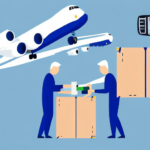7 Tips for Properly Packaging Items to Prevent Damage by UPS
When shipping products with UPS, proper packaging is essential to prevent damage during transit. Improper packaging can lead to lost revenue, dissatisfied customers, added expenses, and shipment delays. This guide provides seven comprehensive tips to ensure your items are securely packaged for UPS shipping.
Importance of Proper Packaging for Shipping
Protecting Your Products
Shipping involves handling by multiple parties and exposure to varying environmental conditions such as temperature fluctuations, moisture, and impact. Proper packaging offers the necessary protection to prevent damage, ensuring your shipment arrives safely at its destination.
According to the UPS Shipping Trends Report, properly packaged shipments have a significantly lower rate of damage compared to inadequately packaged ones, highlighting the financial and reputational benefits of investing in quality packaging.
Cost Efficiency
Damaged packages can lead to returns, replacements, and refunds, all of which increase shipping costs. By using the right packaging materials and techniques, businesses can reduce the likelihood of damage and avoid these additional expenses.
Enhancing Brand Image
Neatly and securely packaged items not only protect your products but also enhance your brand image. Customers receiving well-packaged goods are more likely to have a positive perception of your brand, increasing the likelihood of repeat purchases and positive reviews.
Understanding UPS's Shipping Guidelines
Packaging Requirements
UPS provides specific packaging guidelines for different types of items, including fragile and hazardous materials. It's crucial to review and adhere to these guidelines to ensure compliance and minimize the risk of damage.
For detailed information, refer to the UPS Packaging and Shipping Resource Center.
Shipping Options and Services
UPS offers a variety of shipping options, including ground, air, and international services, each with its own set of requirements and benefits. Additionally, UPS provides tracking information, insurance, and signature confirmation services to further protect your shipments.
7 Essential Packaging Tips
Tip #1: Choosing the Right Type of Box
Select a sturdy box appropriate for the size and weight of your item. Avoid using damaged or reused boxes that may not provide adequate protection.
- Use double-walled boxes for fragile items.
- Ensure the box size allows for sufficient cushioning material.
Tip #2: Using High-Quality Packing Materials
Invest in high-quality packing materials like bubble wrap, packing foam, and packing peanuts to provide effective cushioning and protection during transit.
Low-quality materials may fail to protect your items, leading to damage and increased costs. High-quality packing ensures the longevity of your products and customer satisfaction.
Tip #3: Wrapping Fragile Items Properly
For fragile items such as glassware or electronics, use bubble wrap or foam sheets to secure the items within the box. Label the package as "Fragile" to ensure careful handling.
Consider double boxing fragile items for added protection.
Tip #4: Adding Extra Cushioning Material
Fill any empty spaces in the box with cushioning materials like packing peanuts or foam inserts to prevent items from shifting during transit.
This extra cushioning absorbs impacts and reduces the risk of damage.
Tip #5: Securing Items with Tape and Straps
Seal the box securely with strong, wide tape (at least 2 inches) to prevent openings during transit. Use straps or bands for larger items to add stability.
Ensure all seams are properly taped to maintain the integrity of the package.
Tip #6: Labeling Your Package Correctly
Clearly label your package with the recipient's address and your return address. Use legible handwriting or printed labels to prevent delivery errors.
- Include "Fragile" or "Handle with Care" stickers for sensitive items.
- Ensure hazardous materials are labeled according to regulations.
Tip #7: Insuring Your Shipment
Purchase shipping insurance to protect against loss or damage during transit. UPS offers declared value coverage that matches the actual value of your shipment.
For high-value items, additional coverage options are available to ensure complete protection.
Common Mistakes to Avoid When Packaging for Shipping
- Overpacking: Using excessive packaging can increase shipping costs and contribute to environmental waste.
- Incorrect Labeling: Missing or incorrect labels can lead to delivery delays or lost packages.
- Using the Wrong Box Size: Boxes that are too small can crush items, while oversized boxes can result in items shifting and breaking.
- Poorly Securing Items: Failing to use adequate cushioning can lead to damage during transit.
Saving Money on Shipping Costs Through Proper Packaging
Effective packaging not only protects your items but also helps in reducing overall shipping costs. By minimizing damage and returns, you can save significant amounts on additional shipping expenses.
- Use appropriately sized boxes to avoid paying for extra space.
- Invest in reusable packing materials to cut down on recurring costs.
- Optimize packaging methods to maximize efficiency and reduce material usage.
Best Practices for Shipping Large, Heavy, or Oddly-Shaped Items with UPS
Shipping large, heavy, or uniquely shaped items requires special considerations to ensure they arrive safely.
Using Sturdy Containers
Choose containers with reinforced edges and corners to withstand the weight and handling of large items.
Additional Cushioning and Support
Use extra cushioning materials and consider palletizing items for added stability and ease of transport.
Proper Labeling
Clearly mark packages containing large or heavy items to ensure they are handled appropriately during transit.
Step-by-Step Guide to Packaging and Shipping with UPS
- Select the Appropriate Box: Choose a box that fits your item with enough space for cushioning.
- Prepare the Item: Clean and inspect your item before packaging to ensure it’s ready for shipping.
- Wrap the Item: Use bubble wrap or foam to secure and protect your item.
- Place in Box: Position the wrapped item in the center of the box and fill all empty spaces with cushioning materials.
- Seal the Box: Close the box securely with strong tape, ensuring all openings are sealed.
- Label the Package: Attach clear labels with both sender and recipient information, including any special handling instructions.
- Choose Shipping Options: Select the appropriate UPS shipping service based on urgency and destination.
- Track Your Shipment: Use UPS tracking to monitor the progress of your package until it reaches its destination.
By following these steps and the seven essential tips, you can ensure that your packages are well-protected, comply with UPS guidelines, and reach their destination safely and on time.






















